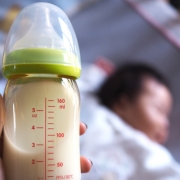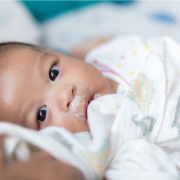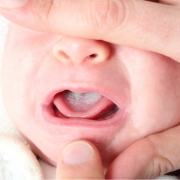
Article at a Glance

Article at a Glance


Article at a Glance

Breastmilk and properly mixed formula contain the perfect amount of water for your baby. Additional water is unnecessary and can be dangerous. As your baby advances to taking other foods, small amounts of water can be offered. Discuss this with your pediatrician at well-visits. When using water to mix formula, follow instructions on the can. … Continue reading “Water”

Vomiting and spitting up are different. Newborn vomiting consists of a large amount of milk forcefully expelled at one time by mouth and it is frequently due to overfeeding. Spitting up consists of small amounts of milk which the baby regurgitates between feedings. Spitting up is of no concern if your baby is growing well, … Continue reading “Vomiting and Spitting Up”

Infants should receive a vitamin K injection shortly after birth. Vitamin K is essential for blood clotting. Vitamin K drops to ineffective levels in newborns within a few days. This can lead to bleeding problems including catastrophic bleeding in the brain. The only effective way to give vitamin K is by injection. Read More: HealthyChildren.org

Breastfed infants should receive 400 IU a day of supplemental vitamin D beginning in the first few days of life and continuing for at least 4-5 months. Formula fed infants should also be supplemented with 400 IU a day of vitamin D until they are taking more than 32 ounces of formula per day. Read … Continue reading “Vitamin D”

Thrush is a common infection of the mouth and tongue caused by yeast. An infant with this infection will have white patches on the inside of the lips and cheeks which will not rub off. Untreated thrush can lead to a severe diaper rash caused by the same yeast or yeast infection of mom’s nipples … Continue reading “Thrush”

Do not put infants in direct sunlight. Due to their relatively thinner skin, infants under 6 months should be covered to avoid direct sun exposure. Dress your infant in: lightweight long pants long-sleeved shirts brimmed hats that shade the neck When adequate clothing and shade are not available, parents can apply a minimal amount of … Continue reading “Sun Exposure”